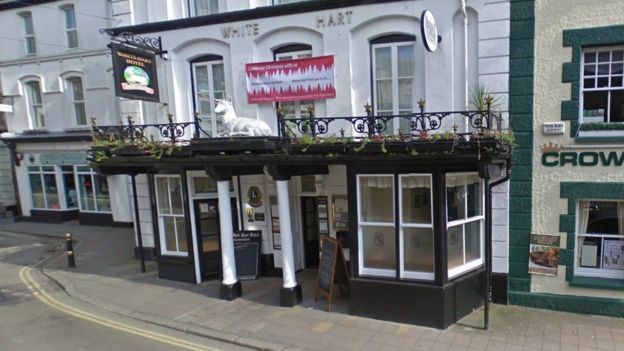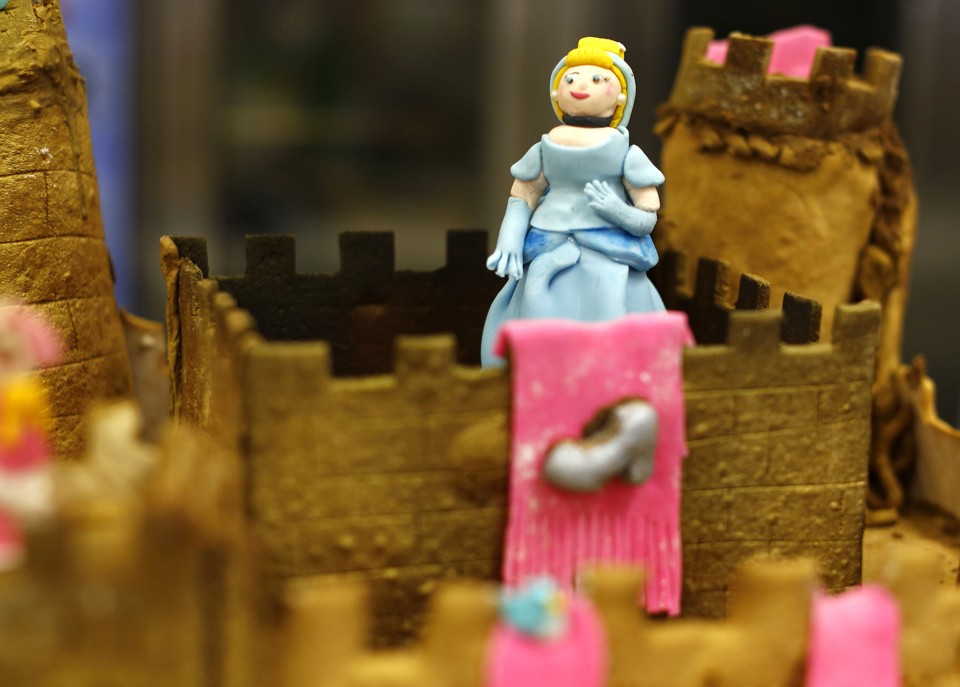via Research Buzz: Liam Barnes at BBC News

An “irreplaceable” archive of photographs of some of the country's most striking public houses that was nearly lost to posterity forever has been made available to the public.
The images, which depict pubs run by the once-mighty London-based Charrington Brewery, were rescued from a skip by Robert Humphreys, where they had been dumped as the company moved offices a quarter of a century ago.
The brewery grew from humble beginnings in the 18th Century to own pubs across the country, many of which were thoroughly documented in regular surveys.
More than 3,000 photographs were rescued by Mr Humphreys, at the time an area manager for the brewery, and taken to the former Bass Museum, now the National Brewery Centre, in Burton-upon-Trent for safekeeping.
Continue reading
I was seriously hard pushed to decide which of the images in the BBC report to bring you.
===================================
via Arts & Letters Daily: Arnold Kling in National Affairs
Socialists and progressives who seek to remake society have typically claimed that their efforts have a scientific basis. Frequently, they accuse their conservative opponents of being anti-science. They dismiss the warnings of Burke, Hayek, and other conservative intellectuals who doubted the ability of the individual scientist-reformer to fully comprehend the social order he proposes to overthrow.
Continue reading
===================================
Using techniques from evolutionary biology, scientists have traced folk stories back to the Bronze Age
via 3 Quarks Daily: Ed Yong in The Atlantic

Stories evolve. As they are told and retold to new audiences, they accumulate changes in plot, characters, and settings. They behave a lot like living organisms, which build up mutations in the genes that they pass to successive generations.
Continue reading
===================================
via OUP Blog by Kamalroop Singh and Gurinder Singh Mann
The scripture known as the Dasam Granth Sahib or the ‘Scripture of the Tenth King,’ has traditionally been attributed to Guru Gobind Singh. It was composed in a volatile period to inspire the Sikh warriors in the battle against the Moghuls, and many of the compositions were written for the rituals related to the preparation for war (Shastra puja) and for the battlefield. The verses generally consist of battle scenes and equate weapons with God, where the sword symbolises the victory of good over evil. War, according to the Tenth Guru, should only be a righteous war or dharam yudh, and it is true that the Sikhs throughout their history have been noted for their exemplary ethics in warfare. Guru Gobind Singh writes in his epic letter known as the Zafarnama that it is only justified to ‘raise the sword once all means have been exhausted.’ The compositions were written in mostly Braj Bhasha, and some smaller compositions are composed in Persian and Punjabi. In contrast to the primary Sikh scripture, the Adi Guru Granth Sahib, which is written in Shanti ras or verses that inspire peace, the Dasam Granth has a heroic strain of expression or Vir ras.
Continue reading
===================================
via Lifehack by Milady Diaz Cabello
As a definition, myths are traditional stories from a country or specific group of people, concerning the early origins of the world or groups of people. They may include explanations to natural or social phenomenons, which are often related to supernatural beings or events. It comes from the Greek mythos and, we could use words such as fable or legend to make comparisons
Continue reading
===================================
via OUP Blog by Celine Aenlle-Rocha
Sometimes mistaken for the trumpet, a near relation, the cornet has had a fascinating and diverse history. Popular from military and jazz bands to the 19th century European stage, the cornet has had a home in the American music scene for generations of musicians and music styles.
Continue reading
===================================
via Boing Boing by Mark Frauenfelder
The Beatles were known as The Quarrymen in 1958. Here's George, John, and Paul (no Ringo), performing "In Spite of All The Danger" on acoustic instruments.
Continue reading
===================================
via The National Archives Blog by Benjamin Trowbridge
It is amazing how a quiet afternoon at The National Archives can provide an opportunity of discovery of unknown history within our collections. Searching online through the Calendar of Patent Rolls, in record series C 66, I found an entry relating to a knight I had not come across before: Sir Hugh John.
Continue reading
===================================
via Arts & Letters Daily: Lara Feigel in The Guardian

“A communist must consider himself a dead man on leave,” Anton tells Martha in Doris Lessing’s 1958 autobiographical novel, A Ripple from the Storm. “A communist is hated, despised, feared and hunted by the capitalists of the world. A communist must be prepared to give up everything: his family, his wife, his children, at a word from the party.”
Continue reading
===================================
A brief history of European opera
via OUP Blog
In 1598, Jacopo Peri’s Dafne premiered in Florence. It is widely considered to be the first opera, that genre of classical music in which a dramatic work is set to music. Over the last 400 years it has evolved into numerous different art forms, from the ballad opera of the eighteenth century to the musical theatre of today, and influenced other genres, from the development of symphony to the ragtime music of the early 20th century. Great works of literature and legend inspired some of the greatest composers, singers, and instrumentalists of their time. We’ve pulled together a brief timeline of some pivotal moments in opera history from the international impact of Monteverdi’s Orfeo to how technology has changed opera’s sound.
Continue reading
via OUP Blog
In 1598, Jacopo Peri’s Dafne premiered in Florence. It is widely considered to be the first opera, that genre of classical music in which a dramatic work is set to music. Over the last 400 years it has evolved into numerous different art forms, from the ballad opera of the eighteenth century to the musical theatre of today, and influenced other genres, from the development of symphony to the ragtime music of the early 20th century. Great works of literature and legend inspired some of the greatest composers, singers, and instrumentalists of their time. We’ve pulled together a brief timeline of some pivotal moments in opera history from the international impact of Monteverdi’s Orfeo to how technology has changed opera’s sound.
Continue reading
No comments:
Post a Comment